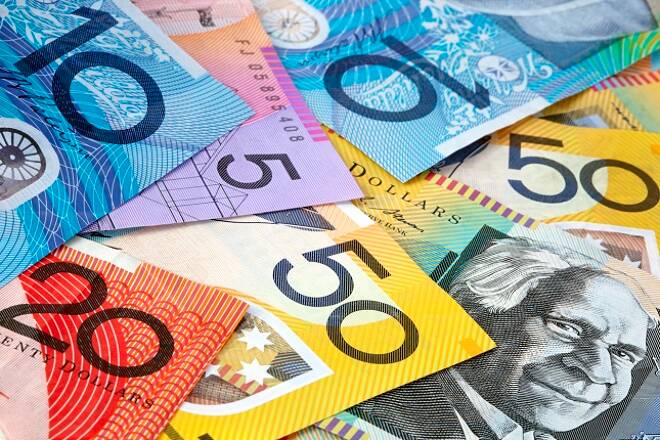Advertisement
Advertisement
Less-Hawkish Governor Lowe Stops Aussie Rally in its Tracks
By:
The Australian Dollar finished lower on Friday, but the tone for the week was mostly bullish as investors bet on an earlier than expected rate hike by the
The Australian Dollar finished lower on Friday, but the tone for the week was mostly bullish as investors bet on an earlier than expected rate hike by the Reserve Bank of Australia (RBA) while the Governor of the central bank downplayed the possibility.
Adding further to the volatility was choppy trade in global risk sentiment and another huge increase in Australian government bond yields. Meanwhile, the RBA ceased its quantitative easing campaign on Thursday having sucked up more than A$350 billion ($251.23 billion) in bonds as part of a massive pandemic stimulus package.
At the end of the week, Australian futures traders were pricing in an RBA move to 0.25% by June and four more hikes to 1.25% by year end. However, RBA Governor Philip Lowe didn’t see it that way with his message to investors highlighting the need to be patient, more so than countries like the United States with higher inflation.
RBA Governor Lowe Sees Risks in Raising Rates Too Early
Australia’s top central banker on Friday said it was plausible interest rates could rise later this year, but there were risks in moving too early and the bank wanted to see a couple more quarterly inflation reports before deciding, Reuters reported.
Speaking before a parliamentary economics committee, Reserve Bank of Australia (RBA) Governor Philip Lowe said it was not yet certain that the recent pick up in inflation would last and the RBA Board was prepared to be patient to make sure.
“I think these uncertainties are not going to be resolved quickly. Another couple of CPI’s would be good to see,” said Lowe, referring to quarterly consumer price index (CPI) reports.
RBA Focused on Getting Unemployment Under 4%, Wages Up
Lowe noted core inflation had only recently returned to the RBA’s target band of 2-3%, having spent seven years below 2%. Wage growth was also lagging at 2.2%, less than half the pace of the United States or Britain, and policy makers wanted it up at 3.0% or more before withdrawing stimulus.
That gave the RBA the rare chance to try and drive unemployment down under 4% for the first time in 50 years, said Lowe. The jobless rate hit a 13-year low of 4.2% in December after falling more quickly than anyone had expected.
“Over the period ahead we have the opportunity to secure a lower rate of unemployment than we thought possible just a short while ago,” said Lowe. “Moving too early (on rates) could put this at risk.”
Lowe Doesn’t See Same Inflationary Pressures as US Federal Reserve
One reason for the hawkish view in Australia is the outlook for U.S. rates, where another shockingly high inflation reading had markets betting the Federal Reserve would hike by a full 50 basis points in March.
However, Lowe emphasized that many of the inflationary pressures seen in the United States were not present in Australia, where consumer prices were running at 3.5% and core inflation.
For a look at all of today’s economic events, check out our economic calendar.
About the Author
James Hyerczykauthor
James Hyerczyk is a U.S. based seasoned technical analyst and educator with over 40 years of experience in market analysis and trading, specializing in chart patterns and price movement. He is the author of two books on technical analysis and has a background in both futures and stock markets.
Advertisement
